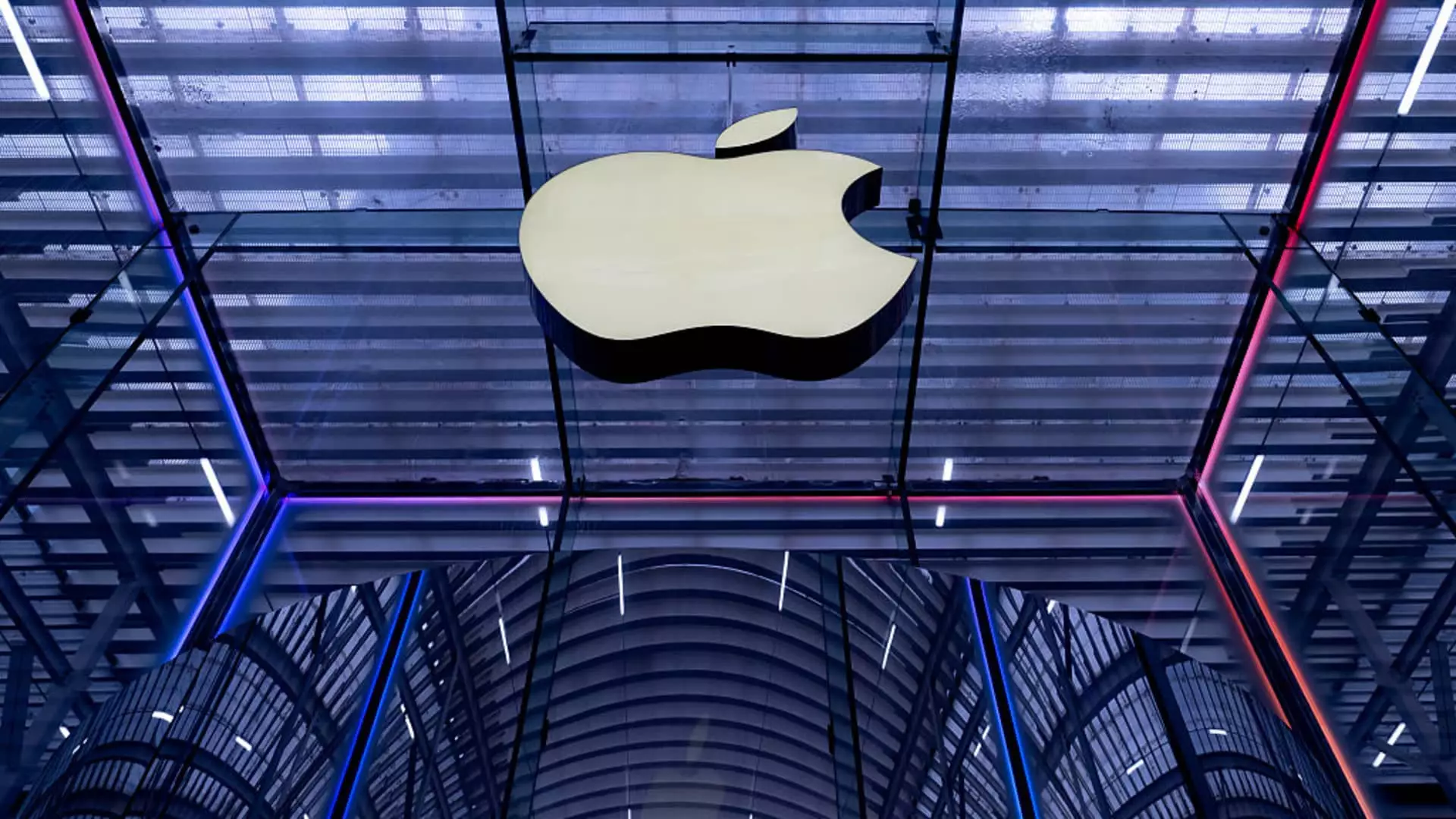In the wake of Apple’s upcoming earnings report, the market’s nerves are palpable. Investors are increasingly worried about the company’s ability to sustain its dominance amid turbulent geopolitical waters and economic headwinds. The buzz surrounding Apple’s potential mentions of China, tariffs, and domestic manufacturing initiatives underscores a broader crisis: America’s technological powerhouse is experiencing a decline in its competitive edge, not because of internal failings, but due to external pressures beyond its control. The narrative isn’t just about quarterly earnings—it’s an alarm bell signaling that American innovation is vulnerable when global trade patterns, political meddling, and protectionist policies hinder free enterprise and technological leadership.
Recent trading data reveals that market enthusiasts are heavily betting on commentary related to tariffs and manufacturing shifts, foretelling a narrative of struggle rather than triumph. Such bets are more than speculation—they reflect real concern about the increasing costs and logistical headaches that come with trying to bring manufacturing back home. While Apple’s efforts to establish a manufacturing academy in Detroit and expand production to India are positive steps, they remain inadequate solutions that do little to fundamentally reverse the damage inflicted by protectionist policies and global supply chain disruptions.
The Cost of Political Interference and Strategic Miscalculations
The Trump administration’s tariffs and threats have cast long shadows over Apple’s long-term strategic planning. Imposing tariffs exceeding 25% on Chinese-made iPhones contradicts the very innovation-led ethos that built Apple’s empire. The company’s decision to diversify production, moving some assembly to India and Vietnam, highlights how political decisions can distort market dynamics and inflate costs. Clearly, these measures, rather than strengthening the domestic manufacturing base, are simply shifting the manufacturing footprint elsewhere, often at greater expense and with uncertain long-term benefits.
This scenario exemplifies a broader failure of policymakers to appreciate the nuances of global supply chains and the importance of maintaining open markets. Protectionism may serve short-term political interests, but it damages the long-term competitiveness of American firms. Apple, as a symbol of American technological prowess, is now caught between a rock and a hard place—facing pressure to localize manufacturing while contending with higher costs and market risks. The fact that India has overtaken China in smartphone exports signals a worrying trend: the U.S. and its allies may lose their lead in high-tech manufacturing, which has historically been a pillar of economic strength.
Domestic Innovation Isn’t the Solution—It’s the Symptom
Despite efforts like the Detroit manufacturing academy, Apple’s move toward greater domestic production feels more reactive than proactive. The reality is that manufacturing of complex tech products like iPhones involves a web of global logistics and specialized supply chains that cannot be simply recreated overnight in the U.S. The projected price hikes—potentially pushing phones well above $1,500—deter consumers and highlight the folly of attempting to insulate high-tech manufacturing from international realities through protectionism.
Furthermore, the focus on shiny new features and product launches masks a grim stagnation in technological innovation. Key products are lacking true revolutionary updates, risking a decline in consumer enthusiasm. Analysts warning of market share losses in China and slowing growth in the U.S. underscore a stark truth: Apple’s growth engine is sputtering, hampered by geopolitical tensions, rising costs, and waning consumer interest.
This stagnation isn’t just an Apple problem—it’s a mirror held up to the entire American tech industry. When innovation slows, jobs become less dynamic, and economic growth stalls. Instead of doubling down on protectionist measures, policymakers should prioritize creating a regulatory environment that promotes competition, safeguards intellectual property, and encourages investment in research and development. Only by fostering an open, competitive landscape can the U.S. preserve its technological leadership.
Entertainment and Economy—the Illusion of Resilience
In the midst of these economic struggles, Apple continues to find ways to diversify its empire—most notably through its entertainment division. Hits like “Severance” and blockbuster films such as “F1: The Movie” underscore Apple’s efforts to cultivate a cultural foothold, providing it with a buffer against hardware sales fluctuations. Yet, relying on content creation as a form of economic insulation is superficial. It distracts from the pressing reality: the core of Apple’s business, its hardware, is facing existential threats from geopolitics and economic mismanagement.
While Apple’s shares have stagnated this year, trailing the broader market, the company’s innovation engine has faltered. The decline in share value is more than just a reflection of investor skepticism—it’s a warning sign that the company’s traditional bread and butter is losing ground. As demand wanes and costs surge, Apple’s strategic options are narrowing. The company’s reliance on entertainment and software to buoy itself indicates a recognition that hardware innovation is no longer enough to sustain growth.
This predicament should serve as a stark lesson for policymakers and industry leaders alike. The American tech sector’s future isn’t secured by hollow diversification into media or entertainment; it depends on building resilient manufacturing, fostering groundbreaking research, and resisting the siren song of isolationist policies. Without these foundational elements, the U.S. risks ceding its technological primacy to competitors who embrace open global markets and robust innovation ecosystems.

